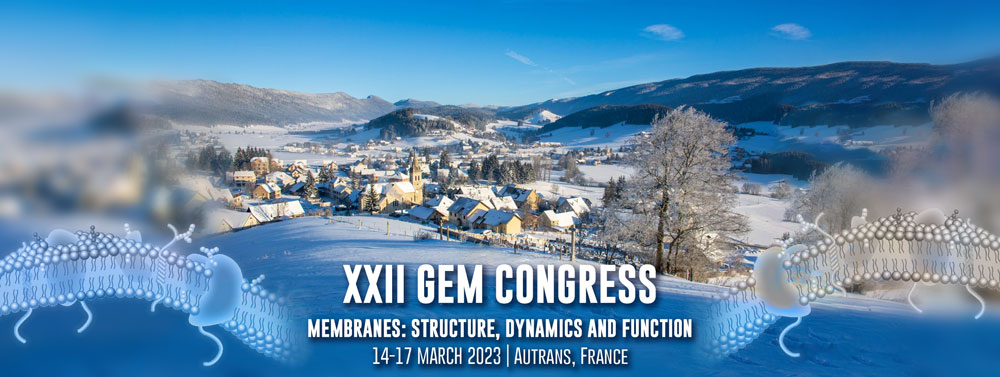Speakers
Description
Ist2 is a yeast transmembrane protein localized in the endoplasmic reticulum (ER). It is a structural homolog of TMEM16 proteins, a family of transporters described as scramblases, i.e., proteins that catalyze facilitated diffusion of lipids in a non-specific manner, and/or anion channels.
Ist2 is made of a N-terminal transmembrane domain, as well as a long cytosolic C-terminus that binds to the PM and associates with Osh6, a yeast cytosolic lipid-transfer protein (LTP). Osh6 achieve the transport of phosphatidylserine (PS) against its concentration gradient, between the ER and the plasma membrane (PM), by exchanging it with phosphatidylinositol-4-phosphate (PI4P) [1]. Given that several TMEM16 family members function as lipid scramblases, our hypothesis is that Ist2, by scrambling PS across the ER membrane cooperates with Osh6 for PS transport from the ER to the PM. The first step is to express, isolate and determine whether Ist2 indeed functions as a lipid scramblase. For this, it is necessary to reconstitute purified Ist2 in proteoliposomes in order to investigate its ability to transport lipids across the membrane using well-established fluorescence-based assays.
Toward that goal, we expressed several versions of the Ist2 protein in the yeast S. cerevisiae, using a biotin acceptor domain (BAD) for affinity purification, as previously defined in our laboratory [2]. The BAD tag has been placed at either the N- or the C- terminus of the protein and a mCherry fluorescent reporter protein has been inserted between Ist2 and the BAD tag. Moreover, for some of the constructs, the Ist2 protein has been deleted from its C-terminal domain, a deletion of about 300 amino acids corresponding to the unstructured cytosolic tail of the protein. This tail contains the site for the interaction with Osh6. To date, expression of Ist2 in yeast membranes proved successful for all constructs proposed, solubilization of some Ist2 constructs by detergents has been tested, and initial purification attempts have been performed, giving encouraging results to move forward to reconstitution trials.
[1] D'Ambrosio, J. M., Albanèse, V., Lipp, N.-F., Fleuriot, L., Debayle, D., Drin, G. and Copic, A. (2020) Osh6 requires Ist2 for localization to the ER-PM contacts and efficient phosphatidylserine transport. J Cell Sci. 133 (11) doi:10.1242/jcs.243733
[2] Jacquot, A., Montigny, C., Hennrich, H., Barry, R., le Maire, M., Jaxel, C., Holthuis, J., Champeil, P. and Lenoir, G. (2012) Phosphatidylserine stimulation of Drs2p·Cdc50p lipid translocase dephosphorylation is controlled by phosphatidylinositol-4-phosphate. J Biol Chem 287: 13249–13261
| Session | Interaction lipids/polymers/membrane proteins |
|---|

